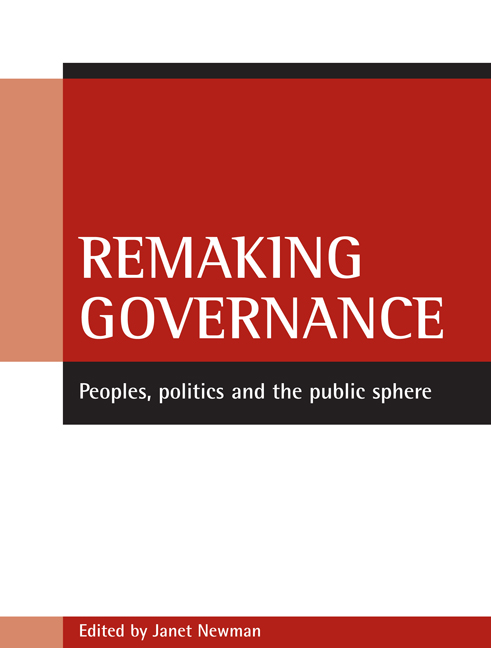Book contents
- Frontmatter
- Contents
- List of tables and figures
- Acknowledgements
- Notes on contributors
- Introduction
- one Reconstituting Europe: governing a European people?
- two Governance and the constitution of a European social
- three Remaking European governance: transition, accession and integration
- four Regendering governance
- five Welfare governance and the remaking of citizenship
- six Participative governance and the remaking of the public sphere
- seven Promoting democratic governance through partnerships?
- eight Among everyday makers and expert citizens
- nine Governance and the transformation of political representation
- Conclusion
- Index
Conclusion
Published online by Cambridge University Press: 18 January 2022
- Frontmatter
- Contents
- List of tables and figures
- Acknowledgements
- Notes on contributors
- Introduction
- one Reconstituting Europe: governing a European people?
- two Governance and the constitution of a European social
- three Remaking European governance: transition, accession and integration
- four Regendering governance
- five Welfare governance and the remaking of citizenship
- six Participative governance and the remaking of the public sphere
- seven Promoting democratic governance through partnerships?
- eight Among everyday makers and expert citizens
- nine Governance and the transformation of political representation
- Conclusion
- Index
Summary
In the Introduction to this volume it was claimed that governance theory tends to work with a ‘thin’ conception of the social. Here, I return to the three themes set out in the Introduction: the remaking of peoples, publics and politics. In doing so I debate the contribution of this volume to conceptualising how peoples and publics are constituted as both the object of governance and as the locus of new forms of social and political agency. Such an understanding, I argue, means rethinking governance as social and cultural, as well as institutional, practices.
Rethinking governance: the constitution of spaces and peoples
This book has been concerned with the multiple spaces of European governance: how these are constituted through governmental practices and how such practices are implicated in the production of cultural imaginaries of peoples and publics. The book began with John Clarke’s chapter on European governance as a political–cultural project and the images of ‘managed diversity’ on which it rests. This chapter explored both the limits and possibilities of diversity in the construction of ideas of a European people, and the ways in which European governance attempts to contain that diversity through the construction and policing of its borders. Emma Carmel took up the theme of borders in Chapter Two, noting how the governance of a particular space or territory is achieved in two ways: first, by the institution of boundaries and borders; and second, by the institution of categories, institutions, rules, procedures and strategies which serve to define and organise the population to be governed. In Chapter Three, Noémi Lendvai then explored the dynamics of European accession and integration from the perspective of one of the Central Eastern European Accession Countries, noting how these dynamics are produced through meaningmaking as well as institutional reform. Across these three chapters we can trace the ways in which governance practices attempt to shape new territorialised imaginaries of people, not only through the delineation and policing of borders, but also through the strategies and practices that serve to constitute a people as an imaginary unity. These ideas were taken up later in the book in relation to the construction of populations into categories based on presumed unities of identity or community (Chapters Six and Seven).
- Type
- Chapter
- Information
- Remaking GovernancePeoples, Politics and the Public Sphere, pp. 197 - 214Publisher: Bristol University PressPrint publication year: 2005



